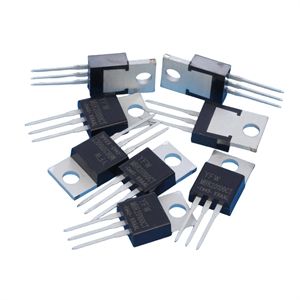Date:2024-11-19 Categories:Product knowledge Hits:404 From:Guangdong Youfeng Microelectronics Co., Ltd
1. Determine the gate G
Set the multimeter to the R × 1k range and measure the resistance between the three pins separately. If it is found that the resistance between a certain pin and its two pins is infinite, and it remains infinite even after swapping the probes, it proves that this pin is the G pole because it is insulated from the other two pins.
2. Determine the source S and drain D
There is a PN junction between the source and drain, so the S and D poles can be identified based on the difference in forward and reverse resistance of the PN junction. Measure the resistance twice using the exchange probe method, with the lower resistance value (usually several thousand ohms to tens of thousands of ohms) being the forward resistance. At this time, the black probe is connected to the S pole and the red probe is connected to the D pole.
3. Measure the leakage source on state resistance RDS (on)
Short circuit the G-S terminal and select the R × 1 range of the multimeter. Connect the black probe to the S terminal and the red probe to the D terminal. The resistance should be a few ohms to over ten ohms.
Due to different testing conditions, the measured RDS (on) value is slightly higher than the typical value given in the manual. For example, using a 500 type multimeter R × 1 gear to test an IRPCP50 VMOS diode, the RDS (on) is 3.2W, which is greater than 0.58W (typical value).
4. Check transconductance
Place the multimeter in the R × 1k (or R × 100) range, with the red probe connected to the S pole and the black probe connected to the D pole. Use a screwdriver to touch the grid, and the needle should have a noticeable deflection. The greater the deflection, the higher the transconductance of the diode.

Previous: Classification, Structure, and Principle of MOSFET